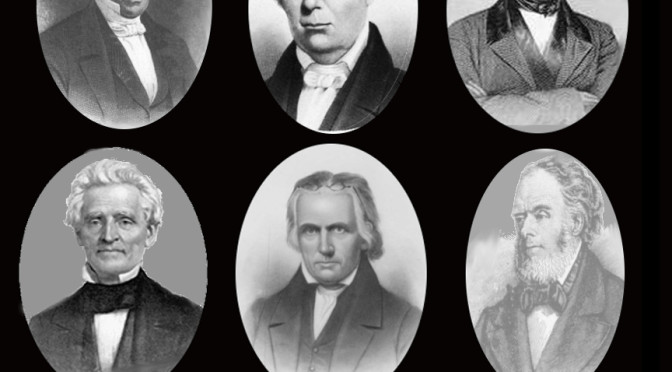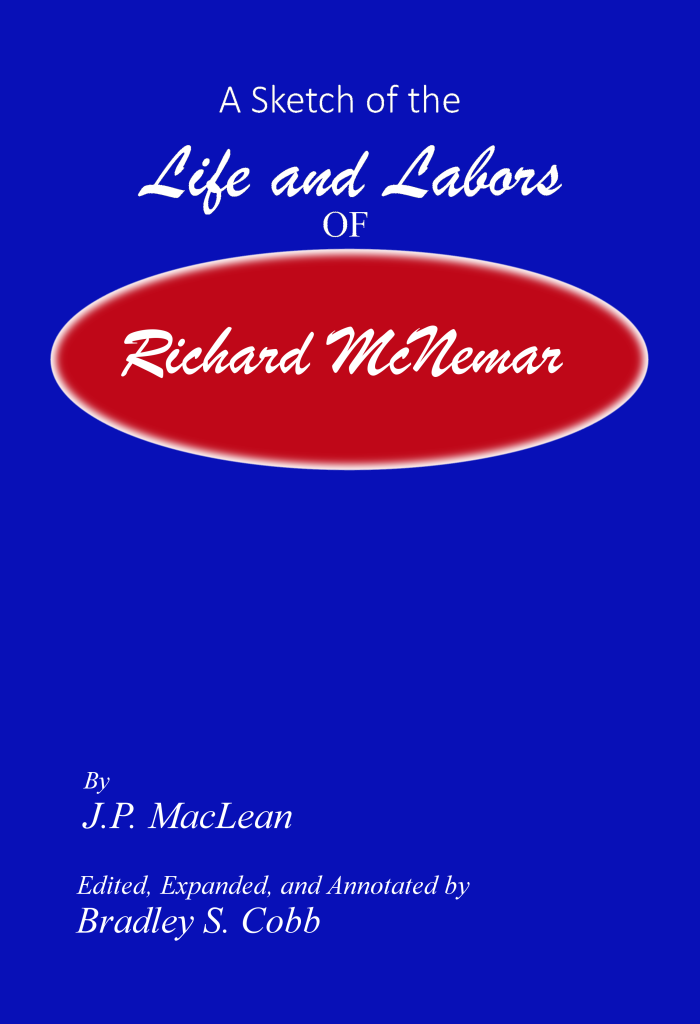From Sketches of Our Pioneers: a Brief Restoration Movement History.
CHAPTER III.
THOMAS CAMPBELL
Thomas, father of Alexander Campbell, was born in County Down, in the north of Ireland, Feb. 1, 1763. He was very devout from his youth. His father belonged to the Church of England and was determined, as he was accustomed to say, “to serve God according to Act of Parliament,” but the son was led to prefer the Church of the Secession and early inclined to enter its ministry. He entered the University of Glasgow and completed the literary course of three years, and received his theological training in the Divinity School at Whitburn. June, 1787, he married Jane Corneigle.
After his graduation, Thomas Campbell gave himself to teaching and preaching. In 1798 he accepted the care of a church at Rich Hill, in County Armagh, not far from the town of Newry, within sight of Lough Neagh, and in one of the most beautiful regions of Ireland. Here the youthful days of Alexander were spent. The home was a model Christian home. Father and mother were Bible-reading, praying, godly people. Regular Scriptural instruction and worship were pursued in the household, and Thomas Campbell sought to introduce the same practice into every home. He was a diligent and faithful pastor. In addition to his ordinary visits, he made a regular tour of his parish twice a year in company with one or more of his elders, inquiring into the state of religion in every home, catechizing the children, examining the older members of the family upon the Bible readings, praying with them, and giving such instructions and admonitions as seemed necessary.
As a preacher he had fine talents and his evident earnestness and personal piety gave great weight to his teachings. The salary of Seceder ministers averaged about $250 a year, and, while the Campbells lived on a farm, they found themselves unable to keep the family on their small income. When Alexander was seventeen, Thomas Campbell opened a school near Rich Hill, associating his son with him in its management. After several years spent in teaching, the excessive labor in discharging the duties of both church and school began to tell seriously upon Thomas Campbell’s health. Physicians advised an entire change of life and such relief as a sea voyage might afford. At length it was decided that Alexander should take entire charge of the school and on April 1, 1807, the father started for America, reaching Philadelphia after a sail of thirty-five days. The Anti-Burgher Synod of North America was in session there, received him very cordially, and commended him to the Presbytery of Chartiers in Washington County, Pa., where he again took up the work of the ministry.
The spirit of sectarianism was very bitter in this region. Different branches of the Presbyterian faith would have no fellowship with each other. Mr. Campbell deplored these differences and permitted members of other Presbyterian churches to partake of the Lord’s Supper with his people, and was arraigned before the Presbytery for failing to inculcate strict adherence to the church standards. His pleadings in behalf of Christian liberty and fraternity were in vain; they censured him.
He appealed to the Synod and they released him from the censure. Such was the feeling toward him, however, that he finally withdrew from the Synod. He continued to preach in groves and private houses and to plead openly for Christian liberality and union upon the Word of God, and the people thronged to hear him. He found many pious and intelligent Christians who, like himself, were dissatisfied with existing religious parties, the intolerance and sectarianism of the times, and inclined to accept the Bible as their supreme guide. A special meeting was appointed at the house of Abraham Altars, where Thomas Campbell declared his conviction that the sacred Word was all-sufficient and alone sufficient as a basis of union and Christian cooperation. He urged the entire abandonment of everything in religion for which there could not be produced a divine warrant, and announced the sentiment “Where the Scriptures speak, we speak; where the Scriptures are silent, we are silent.”
“The Christian Association of Washington” was formed Aug. 17, 1809, and the Declaration and Address issued September 8, 1809. These marked the beginning of the movement which today enrolls a following of millions. At this time Alexander and the other members of Thomas Campbell’s family joined him in the New World. A church was organized on the basis of the principles expressed in the Declaration and Address at Brush Run, which in 1811 became a congregation of immersed believers and united with the Redstone Baptist Association.
Thomas Campbell moved to Cambridge, Oh., in 1813 and opened a school. Two years after, he went to Pittsburg and engaged in preaching and teaching. In the fall of 1812 he removed to Newport, Kentucky and for a time taught an academy at Burlington, returning in 1819 to Washington County, Pa. He found but little progress had been made in the work of reform during his absence. The struggle between sectarianism and the principles of the Declaration and Address was strong and bitter. His son Alexander was now leading the movement. With the publication of the Christian Baptist the principles made great strides. Thomas Campbell made frequent tours, preaching in Western Pennsylvania and the Western Reserve of Ohio, and, while overshadowed in the later development of the cause he pleaded by his more gifted son, his counsels were always potent and his labors untiring and successful.
On the 4th of January, 1854, the long and useful life of this saintly man ended at Bethany. He continued until eighty-three years of age his work of itinerating among the churches. His last sermon was preached in his eighty- ninth year within a few weeks of his death.
“I never knew a man, in all my acquaintance with men,” wrote his son, “of whom it could have been said with more assurance that he ‘walked with God.’”


